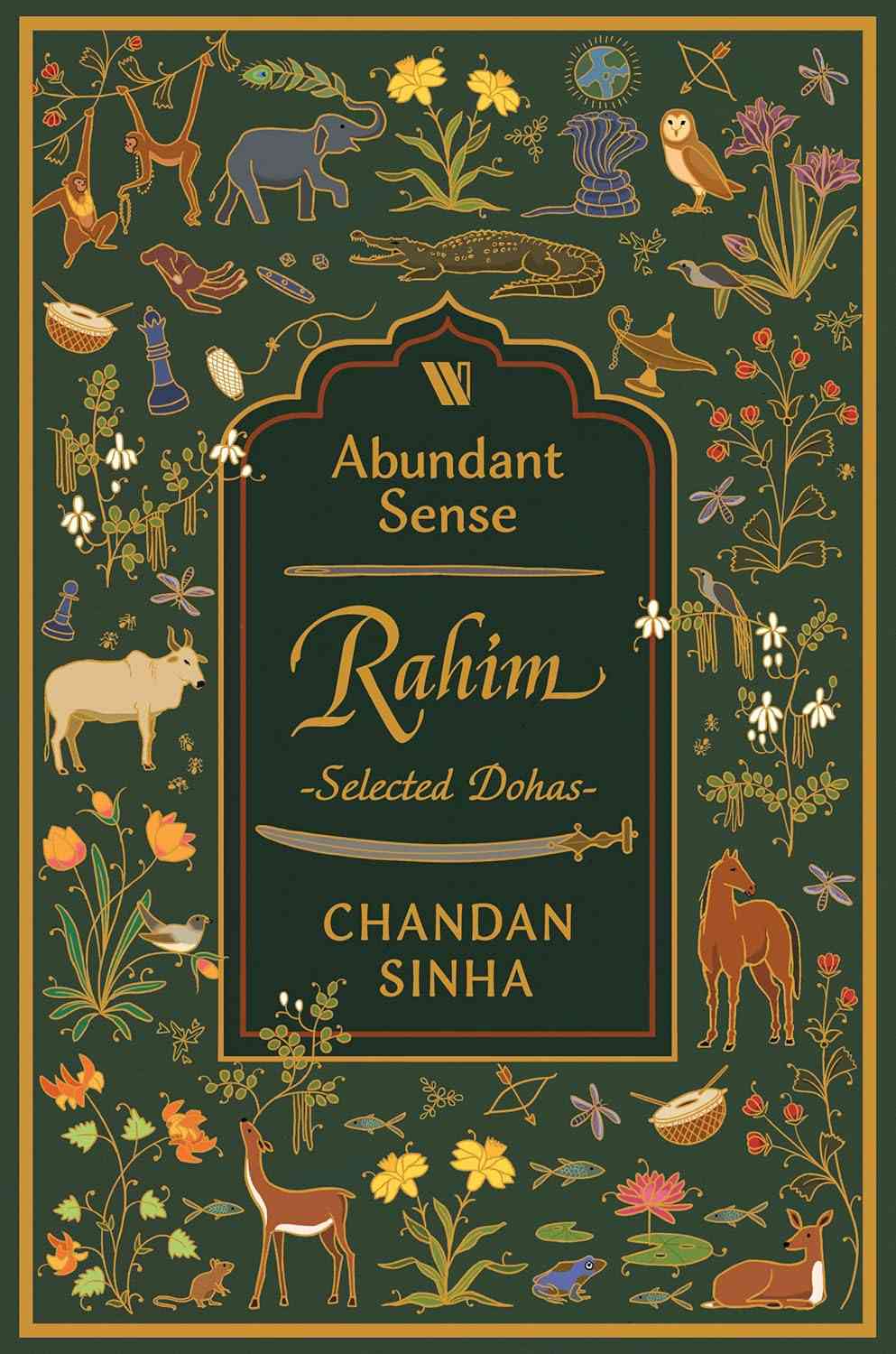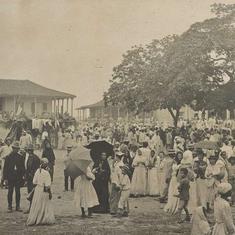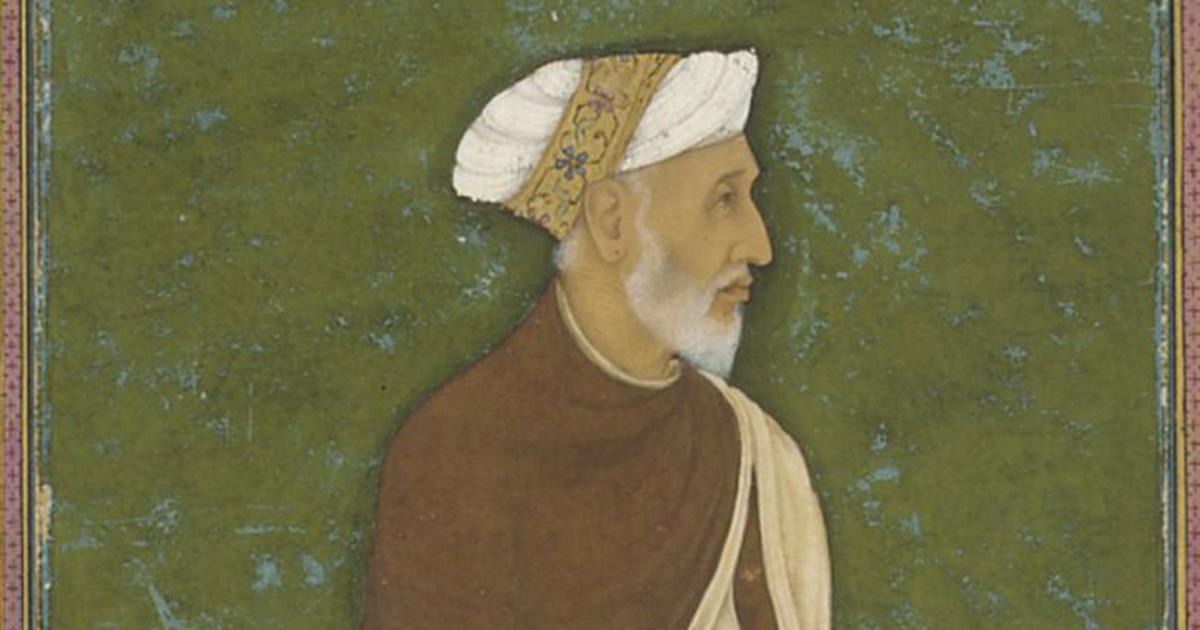The day-to-day experiences of ordinary folk supplied the metaphors that Rahim employed in his dohas; even today they express and evoke shared emotions and beliefs. This quality also strengthens the dohas. Since almost everyone is acquainted with these metaphors, they light up his message. Consider the following doha:
रहिमन अती न कीजिये, गहि रहिये निज कानि ।
सैजन अति फूले तऊ, डार पात की हानि ॥Rahim says, listen carefully, you must avoid excess;
If the morenga blooms too much, its boughs snap under stress.
The warning to avoid excess in everything and the advice to be moderate is illustrated by the image of the slender branches of a morenga tree cracking under the abundance of the long, thin fruit.
Rahim’s metaphors were also drawn from shared traditions and mythology. For instance, to deride both begging and deception, the poet refers to the story of Lord Vishnu tricking the generous King Bali out of his kingdom:
माँगे घटत रहीम पद, कितौ करो बढि काम ।
तीन पैग वसुधा करो, तऊ बावनै नाम ॥Begging diminishes one, Rahim, however great the deed;
Crossed the cosmos in three strides, yet known as the dwarf in need!
This is a well-known Puranic episode that Rahim refers to in at least three dohas to impart related but different lessons. Following the traditions of Hindi poetry, he employed images and incidents from the Hindu religious texts to write poetry, which need not necessarily hold personal meaning for him. This is also true for other metaphors that Rahim uses. An object may be used as a positive metaphor in one doha whereas in another it may acquire a negative value. For instance, in the following doha, the pawn is celebrated for its straightforwardness.
फरजी साह न है सके, गति टेढी तासीर ।
रहिमन सीधे चालसों, प्यादो होत वजीर ॥The queen cannot become king, by nature it’s crooked;
Pawns get to be queen, Rahim, by moving straight ahead.
However, in this instance, the same pawn is deemed an upstart:
जो रहीम ओछो बढ़े, तौ अति ही इतराय ।
प्यादा सों फरजी भयो, टेढ़ो टेढ़ो जाय ॥Rahim, as lowly men advance, they put on new airs;
When a pawn turns into queen, it only crosswise stirs
Rahim can hardly be labelled a hypocrite for using the same metaphor in different ways in two dohas. He was, after all, writing poetry!
He expresses a wide range of emotions – including sorrow, love, wit and humour – through felicitous figures of speech reflecting his understanding of the world. Therefore, his exploration of a range of emotions, from the longings of love to the pitfalls of pride, from the relief of release from desire to the sanity imparted by humility is deep yet delicate. Harish Trivedi puts it most aptly: “There is hardly any other writer in Hindi literature who lived such a tumultuous life at such a high level and also wrote such heart-touching poetry”.
Not only did Rahim write on a variety of themes, he also explored several themes from different standpoints. Here, a brief excursion into Rahim’s dohas on love may prove worthwhile. We find the poet writing often on love in its various aspects that go beyond the perimeters of Riti poetry and Shringar rasa: romantic love, unrequited love, the heartache of separated lovers, love in friendship, and so on. The romantic in Rahim is devastated by the stunning eyes of beautiful women, which feature in several of his dohas. In this case, they may prove to be fatal:
रहिमन तीर की चोट ते, चोट परे बचि जाय ।
नैन बान की चोट ते, चोट परे मरि जाय ॥Rahim, if struck by arrows you may yet survive,
But you’re finished if you are pierced by striking eyes.
Often, Rahim reminds us of the hazardous nature of the path of love and the courage required to negotiate it:
रहिमन मैन-तुरंग चढि, चलिबो पावक माँहि ।
प्रेम-पन्थ ऐसो कठिन सबसों निबहत नाँहि ॥Rahim, astride a horse of wax, race through a field of fire:
The path of love is as trying – everyone can’t aspire
Perhaps recalling Omar Khayyam’s famous quatrain, here he pictures the completeness and self sufficiency of love:
कहा करौं बैकुंठ लै, कल्प बृच्छ की छाँह ।
रहिमन ढाक सुहावनो, जो गल पीतम बाँह ॥What will I do with heaven, the shade of the Wishing Tree?
Rahiman, drums sound sweet with my lover’s arms around me.
Rahim succinctly encompasses the force of unquenchable passion that fires love in the following doha:
जे सुलगे ते बुझि गए, बुझे तो सुलगे नाहिं ।
रहिमन दाहे प्रेम के, बुझि बुझि के सुलगाहिं ॥Whatever smoulders dies out, what’s doused won’t burn again;
Rahim says, those charred by love blaze, again and again.
The tussle between the beloved’s gloom of separation and the firefly-like shimmer of hope is caught here:
बिरह रूप घन तम भयो, अवधि आस उद्योत ।
ज्यों रहीम भादों निसा, चमकि जात खद्योत ॥In the gloom of separation hope shines a tiny light,
As glimmering fireflies, Rahim, illume a monsoon night.
Rahim explores not only the facets of romantic love but other kinds of love too, such as that which flourishes between friends or love that strengthens other social relationships, which are more than transactional:
यह न रहीम सराहिए, लेन देन की प्रीति ।
प्रानन बाजी राखिए, हार होय कै जीति ॥Says Rahim, do not praise love founded on give and take;
You may win or you may lose, but put your life at stake.

Excerpted with permission from Abundant Sense: Rahim, Selected Dohas, Chandan Sinha, Westland.










